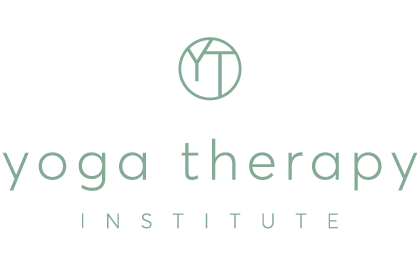We know that Yoga, including asana practice, supports strength, flexibility and balance. Strength is established through working our bones, muscles and intelligent alignment of joints, but how do we improve flexibility? Or more importantly in the realm of Yoga therapy – functionality? Part of the answer lies in the role of the connective tissue known as fascia.
What is it?
Fascia is a thin membrane consisting of collagen and elastin fibres bound together into a range of bodily tissues that weave through, surround and separate muscles, bones and organs.
- Together, these tissues form a weblike, tensional matrix that envelops our entire body from head to toe. Think of it as a fibrous case over our entire muscular system.
- It is a primary building material of varying density and thickness.
- It wraps around nerves ideally affords them a fluid, moveable and protective shield, but fascial stiffness can inhibit movement and nerve pathways.
- “Our fascial fabric constitutes one single biomechanical regulatory system – we benefit from seeing it, training it, and treating it that way.”
Why do Yoga Therapists need to know about Fascia?
When considering the effects fascia has on one’s body, “fascia restrictions can impede proper cellular metabolism, respiration, nutrition, elimination and lymphatic flow. Fascia is also the home of phagocytes and can influence the immune system in a negative way.” When it is is restricted, tight or stuck it can lead to pain, headaches, dysfunction, and, disease. Therefore, it’s important to consider fascia when assessing how to approach your students or clients in a yoga therapy setting.
- Yoga is best grasped as holistic and unifying, rather than fragmented.
- Quality of functionality and movement can be addressed from the gross to the more subtle; from anatomy and physiology to neurological theory, from asana through pranayama and the higher limbs in a fully-integrated manner.
- Exploration through appropriate Yoga therapy practices can help reveal ‘stuckness’ and build self-awareness, which will enhance healing.
How to Explore Fascia with your clients and students
- Give them the opportunity to feel their fascia. Eg. In a pose such as Adho Mukha Svanasana (Downward Dog) ask: “Where do you feel the most tightness or stiffness in the body?” or
- Clench your hand into a tight fist, then open your hand and spread your fingers as wide as possible. By repeating this movement you can feel and visualise your fascia at work.
- Identify the key areas where tightness or stiffness exists for your student/client.
- Incorporate held poses that target tight areas. (Eg. For a student with a tight groin, holding ‘Frog pose’ for an extended period of time will target the connective tissues around the Adductors).
Thomas Myers https://www.anatomytrains.com/
Cells that protect the body by ingesting or engulfing harmful or foreign particles or debris.
John F. Barnes (2017), Use Fascia as a Lever in Massage Magazine, p56-59. https://www.myofascialrelease.com/downloads/articles/FasciaAsALever.pdf
Candelaria, A. (2016) Fascia: The Flexibility Factor You’re Probably Missing on the Mat, Yoga Journal https://www.yogajournal.com/lifestyle/what-is-fascia
Schleip R., Baker A. (2015) Fascia in Sport and Movement Handspring Publishing
